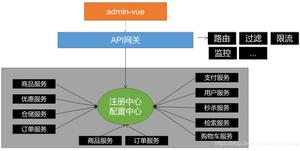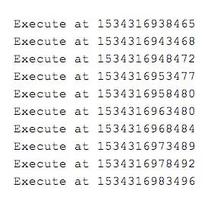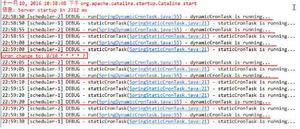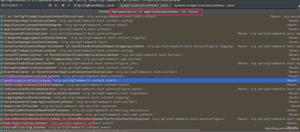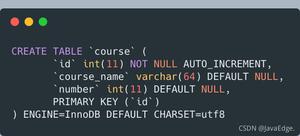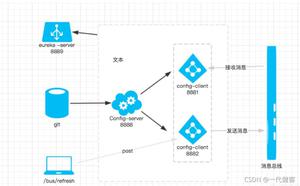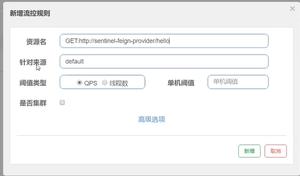通过Spring的RESTful身份验证
问题:
我们有一个基于Spring MVC的RESTful API,其中包含敏感信息。该API应该是安全的,但是不希望随每个请求一起发送用户凭证(用户/密码组合)。根据REST准则(和内部业务要求),服务器必须保持无状态。该API将由另一台服务器以mashup方式使用。
要求:
客户端
.../authenticate使用凭据向(不受保护的URL)发出请求;服务器返回一个安全令牌,该令牌包含足够的信息供服务器验证未来的请求并保持无状态。这可能包含与Spring Security的Remember-Me Token相同的信息。客户端向各种(受保护的)URL发出后续请求,将先前获得的令牌附加为查询参数(或者,不太希望是HTTP请求标头)。
不能期望客户端存储cookie。
由于我们已经使用过Spring,因此该解决方案应该利用Spring Security。
我们一直在努力地解决这个问题,所以希望外面有人已经解决了这个问题。
在上述情况下,你将如何解决这一特殊需求?
回答:
我们设法完全按照OP中的描述进行工作,希望其他人可以使用该解决方案。这是我们所做的:
像这样设置安全上下文:
<security:http realm="Protected API" use-expressions="true" auto-config="false" create-session="stateless" entry-point-ref="CustomAuthenticationEntryPoint"> <security:custom-filter ref="authenticationTokenProcessingFilter" position="FORM_LOGIN_FILTER" />
<security:intercept-url pattern="/authenticate" access="permitAll"/>
<security:intercept-url pattern="/**" access="isAuthenticated()" />
</security:http>
<bean id="CustomAuthenticationEntryPoint"
class="com.demo.api.support.spring.CustomAuthenticationEntryPoint" />
<bean id="authenticationTokenProcessingFilter"
class="com.demo.api.support.spring.AuthenticationTokenProcessingFilter" >
<constructor-arg ref="authenticationManager" />
</bean>
如你所见,我们创建了一个自定义AuthenticationEntryPoint,401 Unauthorized如果我们的请求未在过滤器链中进行身份验证,则该自定义基本上只会返回一个AuthenticationTokenProcessingFilter。
CustomAuthenticationEntryPoint:public class CustomAuthenticationEntryPoint implements AuthenticationEntryPoint {
@Override
public void commence(HttpServletRequest request, HttpServletResponse response,
AuthenticationException authException) throws IOException, ServletException {
response.sendError( HttpServletResponse.SC_UNAUTHORIZED, "Unauthorized: Authentication token was either missing or invalid." );
}
}
AuthenticationTokenProcessingFilter:
public class AuthenticationTokenProcessingFilter extends GenericFilterBean { @Autowired UserService userService;
@Autowired TokenUtils tokenUtils;
AuthenticationManager authManager;
public AuthenticationTokenProcessingFilter(AuthenticationManager authManager) {
this.authManager = authManager;
}
@Override
public void doFilter(ServletRequest request, ServletResponse response,
FilterChain chain) throws IOException, ServletException {
@SuppressWarnings("unchecked")
Map<String, String[]> parms = request.getParameterMap();
if(parms.containsKey("token")) {
String token = parms.get("token")[0]; // grab the first "token" parameter
// validate the token
if (tokenUtils.validate(token)) {
// determine the user based on the (already validated) token
UserDetails userDetails = tokenUtils.getUserFromToken(token);
// build an Authentication object with the user's info
UsernamePasswordAuthenticationToken authentication =
new UsernamePasswordAuthenticationToken(userDetails.getUsername(), userDetails.getPassword());
authentication.setDetails(new WebAuthenticationDetailsSource().buildDetails((HttpServletRequest) request));
// set the authentication into the SecurityContext
SecurityContextHolder.getContext().setAuthentication(authManager.authenticate(authentication));
}
}
// continue thru the filter chain
chain.doFilter(request, response);
}
}
显然,TokenUtils其中包含一些私有(且非常与案例有关)的代码,并且不能轻易共享。这是它的界面:
public interface TokenUtils { String getToken(UserDetails userDetails);
String getToken(UserDetails userDetails, Long expiration);
boolean validate(String token);
UserDetails getUserFromToken(String token);
}
以上是 通过Spring的RESTful身份验证 的全部内容, 来源链接: utcz.com/qa/415849.html

